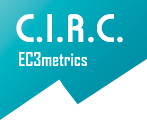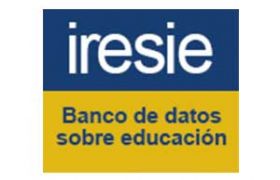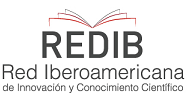¿QUÉ ME AYUDA A APRENDER Y PARTICIPAR?: HERRAMIENTAS PARA RECOGER LAS VOCES DE LOS ESTUDIANTES
Resumen
El objetivo del trabajo que se presenta es poner en evidencia la importancia de los procesos de participación de los estudiantes en la mejora docente, concretamente en las prácticas de enseñanza preocupadas por asegurar el éxito de todo el alumnado del aula sin exclusiones. Se mostrarán estrategias utilizadas en 33 centros de Educación primaria y Educación Secundaria que han participado en dos proyectos europeos cuya finalidad ha sido mostrar la eficacia de la colaboración docente y las voces del alumnado para contribuir en el desarrollo profesional docente. La finalidad última del trabajo es que los ejemplos mostrados sirvan de inspiración a otros centros para poner en marcha de forma sostenible procesos de participación del alumnado, como estrategia para construir entornos cada vez más inclusivos. Además, en el texto se describen y analizan algunos aprendizajes sobre la participación de los estudiantes en los centros escolares.
Palabras clave
Referencias
• Adderley, R. Hope, M., Hughes, G., Jones, L.; Messiou, K. y Shaw, P (2015) Exploring inclusive practices in primary schools: focusing on children’s voices, European Journal of Special Needs Education, 30 (1), 106-121, DOI:10.1080/08856257.2014.964580
• Ainscow, M., Dyson, A., Goldrick, S. y West, M. (2012). Developing equitable education systems. Abington. Oxon: Routledge.
• Allmark, P., Stevenson, K.J., y Stotzer, T. (2017). Having a voice and being heard: Photography and children's communication through photovoice. In F. Martin (ed), Refereed Proceedings of the Australian and New Zealand Communication Association Conference 2017- Communication Worlds: Access, Voice, Diversity, Engagement.
• Bland, D. y Atweh, B. (2007). Students as researchers: engaging students’ voices in PAR. Educational Action Research 15 (3): 337–349.
• Booth, T. y Ainscow.M. (2015). Guía para la Educación Inclusiva. Desarrollando el aprendizaje y la participación en los centros escolares. Madrid: OEI/FUHEM [Trad. Cast. Booth, T. y Ainscow, M. (2011). Index for Inclusion. Developing learning and participation in schools (3ª ed.rev.).Bristol: CSIE]
• Bragg, S. (2007). Student voice’ and governmentality: the production of enterprising subjects? Studies in the Cultural Politics of Education, 28(3),343-358.
• Clarke, A. Condon, B.; Cushman, D., Demetriou, H. y Easton, L. (2015).Learning From the Student’s Perspective: A Sourcebook for Effective Teaching, Routledge.
• Cutler, D. (2002) Taking the Initiative. London: Carnegie United Kingdom Trust.
• Dorrian, A.-M., K. Tisdall y D. Hamilton (2001) Taking the Initiative: Promoting Young People’s Participation in Public Decision-Making in Scotland. London: Carnegie United Kingdom Trust
• Fielding, M y McGregor, J. (2005). Deconstructing Student Voice: New Spaces for Dialogue or New Opportunities for Surveillance? Speaking up and Speaking out: International Perspectives on the Democratic Possibilities of Student Voice. Montreal, April 2005.
• Fielding, M. (2001) Students as Radical Agents of Change. Journal of Educational Change 2, 123–141 https://doi.org/10.1023/A:1017949213447
• Florian, L., y Beaton, M. (2018). Inclusive pedagogy in action: Getting it right for every child. International Journal of Inclusive Education, 22(8), 870-884. https://doi.org/10.1080/13603116.2017.1412513
• Gunter, H. y Thomson, P. (2007) Learning about students voice. Support for learning, 22 (4), 181-188.
• Hintz, A. y Tyson, K. (2015). The Complexities of Listening: An analysis of student and teacher listening during mathematical discussion. Mathematical Thinking and Learning.
• Johnson, K. (2008). Teaching children to use visual research methods. En P. Thomson (Ed.), Doing visual research with children and young people (pp. 77–94). Londres: Routledge.
• Levin, B., y Rock, T. (2003). The Effects of Collaborative Action Research on Preservice and Experienced Teacher Partners in Professional Development Schools. Journal of Teacher Education 54 (2), 135–149.
• MacBeath, J. , Demetriou, H. , Rudduck, J. y Myers, K. ( 2003) Consulting Pupils: A Toolkit for Teachers. Harlow: Pearson.
• Mager, U.y Nowak, P. (2012) Effects of Student Participation in Decision Making at School. A Systematic Review and Synthesis of Empirical Research Educational Research Review, 7(1), 38-61.
• Manca, S. y Grion, V. (2017) Engaging students in a school participatory practice through facebook: the story of a failure. British Journal of educational Technology, 48, 5, 1153-1163
• Mayes, E. (2017) Reconceptualising the presence of students on school governance councils. The a/effects of spatial positioning. Policy futures in education doi: 10.1177/1478210317739468
• McIntyre, D. y Rudduck, J. (2007) Improving Learning Through Consulting Pupils. Routledge, London.
• Messiou, K. (2012). Confronting marginalisation in education: A framework for promoting inclusion. London: Routledge.
• Messiou, K., Ainscow, M., Echeita, G., Goldrick, S., Hope, M., Paes, I., Sandoval, M., Simon, C., y Vitorino, T. (2016) Learning from differences: a strategy for teacher development in respect to student diversity. School Effectiveness and School Improvement, 27 (1), 45-61, DOI: 10.1080/09243453.2014.966726
• Mitchell, S.N., Reilly, R.C. y Logum M.E. (2009). Benefits of Collaborative Action Research for the Beginning Teacher. Teaching and Teacher Education, 344–349.
• Mitra, D. (2006) Increasing students voice and moving toward youth Leadership. The prevention researcher, 13(1), 7-10.
• Mitra, D. (2009). Student Voice in School Reform: Building Youth-Adult Partnerships That Strengthen Schools and Empower Youth. Albany, NY: State University of New York Press
• Mockler, N., y Groundwater-Smith, S. (2015). Engaging with student voice in research, education and community: Beyond legitimation and guardianship. Cham, Switzerland: Springer.
• Rudduck, J. (2007). Student voice, student engagement, and school reform. En D. Thiessen y A., Cook-Sather (Eds), International Handbook of Student Experience in Elementary and Secondary School (pp. 587-610). Dordrecht: Springer.
• Rudduck, J., y J. Flutter. (2004). How to improve your School: giving pupils a voice. London: Continuum.
• Sainz-Linares, A., Ceballos, N. y Susinos, T. (2019) Voz del alumnado y mejora docente. Una investigación en centros educativos en Cantabria. Revista Complutense de Educación, 30(3)713-728.
• Autores . (2020) Students as researchers for promoting school improvement and inclusion: A review of studies. International Journal of Inclusive Education Doi:10.1080/13603116.2020.1730456
• Autores (2018) La incorporación de la voz del alumnado a la ‘Lesson Study’ como estrategia de formación docente y mejora para la inclusión. Cultura y Educación, 30 (1), 205-225 doi:10.1080/11356405.2017.1416741
• Susinos, T., Ceballos, N. y Saiz, Á. (2018). Cuando todos cuentan. Experiencias de participación de estudiantes en las escuelas. Madrid: La Muralla
• Susinos, T., Ceballos, N., Saiz, A., y Ruiz, J. (2019). ¿Es la participación in-clusiva el unicornio en la escuela? Resultados de una investigación sobre la voz del alumnado en centros de educación obligatoria. Publicaciones, 49(3), 57–78. doi:10.30827/publicaciones.v49i3.11404
• Thomson, P. (2011). Coming to terms with 'voice'. En G. Czerniawski, W. Kidd, G. Czerniawski y W. Kidd (Eds.), The student voice handbook: Bridging the academic/practitioner divide (pp. 19-30). UK: Emerald Group Publishing.
Enlaces refback
- No hay ningún enlace refback.
Indexación:
Factor de impacto JCI: 0,81. categoría Q4 |  |  |
 |  |  |
 |  |  |
|  |  |
 |  |
|
-
| ISSN: 1889-4208 / e-ISSN: 1989-4643 | |
 Este trabajo se autoriza con una licencia Creative Commons Asignación 4.0 Internacional.
Este trabajo se autoriza con una licencia Creative Commons Asignación 4.0 Internacional.


